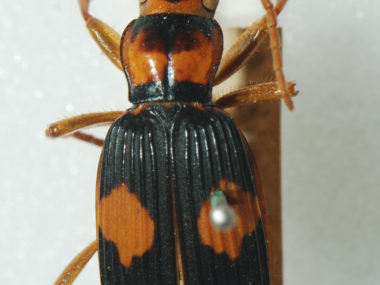The science attempting to identify the baramins of the world is called baraminology1. Baraminologists search for holobaramins, groups of organisms surrounded by deep discontinuity. They suspect that these holobaramins correspond to the ‘biblical kinds’ or baramins of Scripture. Preliminary baraminology research suggests that, in contrast to the nearly two million fossil and living species that have been described so far, the number of extinct and living baramins probably totals only a few thousand. The relatively small number of baramins in the world may resolve a couple challenges that have been leveled against the biblical account over the centuries.
The following article is an excerpt from Devotional Biology: Learning to Worship the Creator of Organisms, Chapter 4.2, pg. 90. The views expressed reflect those of the authors, and not necessarily those of New Creation.
At various times, critics of the Bible have claimed that there are too many species on this planet for Adam to have named all the animals in a single day, or for the ark to have carried all the land animals through the Flood. However, since the biblical account repeatedly refers to animals ‘according to their kind’—and specifically does so in both the creation and the Flood account—it is likely that Adam was naming baramins, not species, and the ark was carrying baramins, not species. The biblical account indicates Adam named all the ‘beasts of the field’ and ‘fowl of the air’. The ‘beasts’ do not include the creeping things (as seen in the lists of Gen. 1:24-25), and the ‘beasts of the field’ probably refer only to the animals closely associated with humans (as opposed to the more general term ‘beasts of the earth’ of Gen. 1:24-25).
Therefore, even if Adam named the field and flying animals of the entire world—as opposed to naming all the field and flying animals of Eden—the number of baramins involved is probably less than 300 (versus thousands of species). Adam could have named this number of animals in a few hours or less. In the case of the ark, since its purpose was to save land animals through the Flood, only land animals had to be included. The number of land animal baramins is probably about one or two thousand, so at most only a few thousand animals had to be placed on the ark (versus tens or hundreds of thousands of species). The size of the ark described in the biblical account (Gen. 6:15) could easily accommodate this many.
Footnotes
- Baraminology is a creationist biosystematics method (method of classifying and naming organisms), created and named (Hebrew bâra, ‘to create’ + Hebrew mîn, ‘kind’ + Greek logos, ‘discussion’ or, perhaps, ‘study of’) by Kurt Wise in 1990. ↩︎











